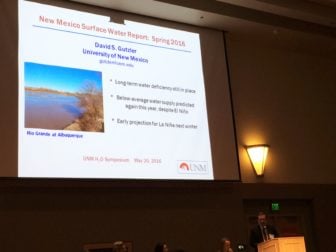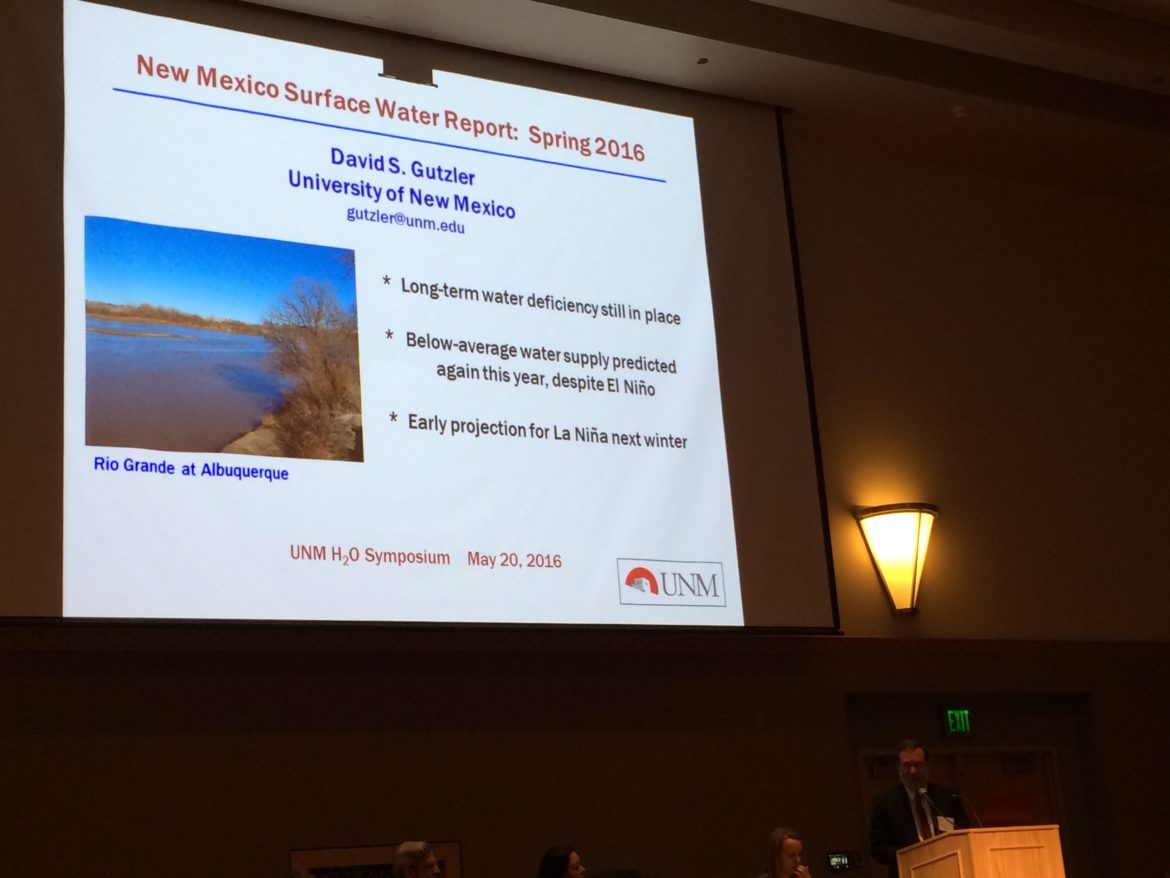
Laura Paskus/NMID
Dr. David Gutzler presented about New Mexico’s dry conditions at a water conference at UNM last week.
At a water conference last week, David Gutzler, a professor in the University of New Mexico Earth and Planetary Studies Department, noted that the El Niño weather pattern didn’t exactly work wonders for New Mexico’s mountains, rivers, and reservoirs. And now, warmer and drier conditions are expected to return to the Southwest.
Gutzler, one of the lead authors of the Intergovernmental Panel on Climate Change’s 2013 Assessment Report joked that while he’s typically a “doom and gloom guy” – bringing people data on climate change and drought – he took a respite from that for a few months last year. That’s because beginning last spring, El Niño conditions, which can bring plentiful monsoon rains in the summer and increased snowfall in the winter to the Southwest, had been in place.
“I now stand ready to revert back to my usual role,” he said.
That’s because there’s a La Niña forecast for next winter. That means hot and dry conditions for New Mexico.
Gutzler cautioned that it’s still very early in the forecast period. But the news brought groans anyway. “Next winter, if La Niña returns, we can expect less-than-average precipitation and warmer-than-average temperatures,” he said. That pattern will start to emerge in the fall, he estimated.
Drought conditions did ease throughout the state earlier this year. But El Niño didn’t bring all the moisture people had hoped for – even to the northern mountains. The spring’s warm temperatures didn’t help either. Like in years’ past, warmer-than-average spring conditions caused melting and sublimating, and once again threw off the government’s snowmelt predictions. To read more about that issue, see our story from last year about snowmelt and streamflow forecasting.
Anticipating and planning for precipitation in the Southwest is always a “dicey proposition,” Gutzler said. And now, given current conditions, there’s no predicted end to water management challenges in the region.
At the conference, water managers, lawyers, and scientists met at the University of New Mexico to discuss institutional constraints to water management in the state. That is, they talked about what laws, established ways of doing things, and natural conditions may be preventing New Mexicans from dealing with water scarcity and water quality.
Conversations focused on everything from funding for forest fires to the Gold King Mine spill into the Animas River.
The one-day conference was organized by UNM’s Center for Water and the Environment and the School of Law’s Utton Transboundary Resources Center.
